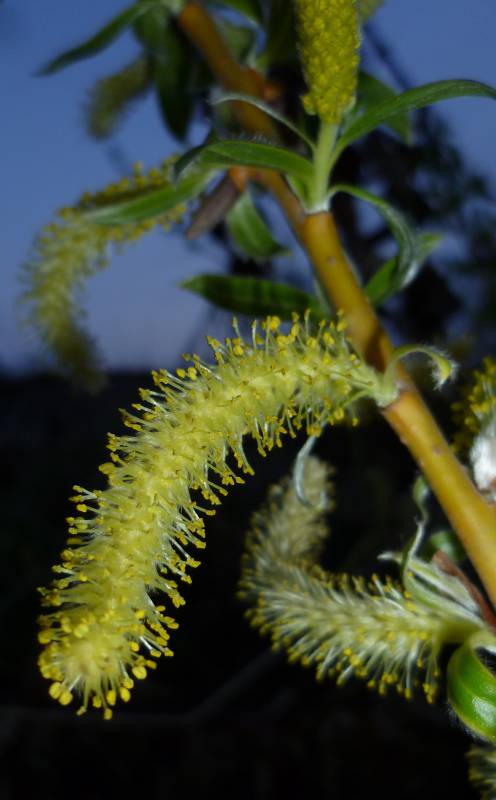Hosted by the University of Washington Herbarium, Burke Museum
Publication: Sp. Pl. 2: 1017. 1753.
Origin: Introduced from Europe
Herbarium search: CPNWH
Notes: FNA7: "Salix ×fragilis Linnaeus: The hybrid white willow, S. alba Linnaeus × S. euxina I. Belyaeva, a European introduction, is the most commonly cultivated and naturalized tree-willow in the flora area. It is characterized by: trees, 3-20 m, stems erect or drooping; branches highly brittle at base; petioles with spherical or foliaceous glands distally, pilose or villous adaxially; largest medial leaf blade amphistomatous, very narrowly elliptic or narrowly elliptic, margins uniformly serrate or serrulate, abaxial surface glaucous, both surfaces sparsely long-silky to glabrescent, adaxial surface slightly glossy or dull; juvenile leaves at first densely long-silky soon glabrous; pistillate bract deciduous after flowering; stamens 2; anthers yellow; pistillate adaxial nectary shorter than or equal to stipe; stipe 0.3-0.5 mm; ovary pyriform, glabrous; ovules 6-12 per ovary; styles 0.4-1 mm; capsules 4.5-6 mm; 2n = 57, 76. Flowering is in late May-early June. Individual trees can persist for years by trunk suckering and spread vegetatively by shoot fragmentation along stream margins, shingle and sand beaches, sedge meadows, hardwood forests, and sand pits. It occurs from 0 to 2500 m."
Last updated 10/25/2023 by David Giblin.

